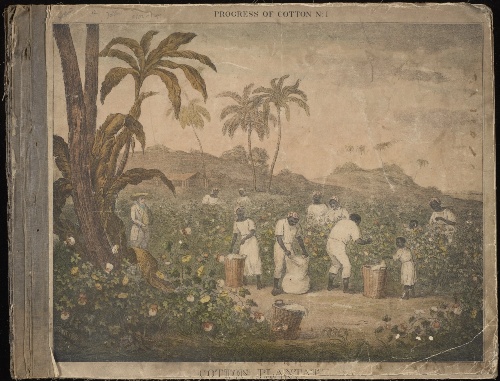Addressing our historic links to slavery
We are on an ongoing journey to address the legacy of slavery. While we have already taken some action, there is much more to do and this is not the end of our work on this important subject.
What action are we taking?
We can share the analysis of those key early connections between early benefactors of the University and the global slave trade in an article by Dr Natalie Zacek (an expert on slavery in our School of Arts Languages and Cultures) and Professor Nalin Thakkar (Vice-President for Social Responsibility).
We are also mindful of the fact that work has already been carried out in various parts of our University which has helped to get us to this point. Part of this publication process is to draw together this research in one place.
This includes:
- Exploring the Legacies of Slavery and Colonialism at The University of Manchester – a 2021 project in the School of Arts, Languages and Cultures that followed the publication of our Race Matters Report and contains further biographical details of early benefactors.
- Revealing Histories: Remembering Slavery – a 2007 project in which Manchester Museum was a partner.
- Rylands Reflects: The Founder and the Fortune – a 2020 blog by Dr Natalie Zacek which looks in more detail at the foundation of the John Rylands Research Institute and Library.
- Golden Mummies of Egypt – a book by Dr Campbell Price, our Curator of Ancient Egypt and Sudan, which explores how and why the Manchester Museum’s related collections came to be in the city.
Dr Natalie Zacek on researching links to slavery
-2.jpg)
Historic Object Review
We have also been supporting the city of Manchester’s own reflections on historic statues, monuments, memorials and artworks, through our spin-out charity, Manchester Histories, and as an institution as part of the Histories, Stories and Voices in Manchester’s Public Realm (PDF, 832KB) public consultation.
One of the outputs of this review was for the City Council to create a Heritage Object Review – a database of objects, including, statues, monuments, memorials and artworks in the public realm – and we are fully engaged in this.
We have already taken action on our campus. For example, as a result of the John Rylands Research Institute and Library’s own research, signage has been added to reflect the links between Rylands’ fortune and the transatlantic cotton trade.
'Founders and Funders' exhibition

In September 2023, the Rylands opened a new exhibition 'Founders and Funders: Slavery and the building of a University’, exploring how profits from slave trading, ownership of enslaved people, and manufacturing with slave-grown cotton funded the cultural and educational development of Manchester.
The exhibition was underpinned by new research by University students, which traced the wealth of five of the most significant founders and funders of the institution to transatlantic enslavement.
An accompanying blog series from the exhibition’s student researchers and curators includes posts on:
- Founders and Funders: An introduction
- The Heywoods
- Thomas Robinson
- John Owens
- Murray Gladstone
- McConnel and Kennedy
Intersectionality, ‘race’ and gender in academia
As part of Universally Manchester Festival – a celebration held by the University to mark our bicentenary year in June 2024 – Professor Dawn Edge delivered ‘First and Only: Intersectionality, ‘Race’ and Gender in Academia’, her insightful and powerful inaugural lecture on how ‘race’, gender and the quest for social justice in health and care have shaped her journey so far.
What else is going to happen?
While we have already taken some action, there is much more to do and this is not the end of our work on this important subject.
Now that our initial analysis is complete, we are funding some more detailed research that will be overseen by Dr Natalie Zacek, who has written our initial article and carried out other research into this issue at the University. Natalie is currently on a fellowship at Harvard studying ‘The Price of Knowledge: British Universities and Slavery’.
This will be in depth, and so take time, but these findings will be made public.
In light of our additional research, we will be considering what needs to change in the way we talk and think about our campus. This includes further work on building signage, on our webpages connected to our history and wider promotional materials. Our history and heritage webpages have been updated and will continue to evolve.
This is not the limit of our actions – we are on an ongoing journey to address the legacy of slavery, including our work to address modern forms of slavery. A range of this work is cited in these additional sources of information.
Supporting our community
Resources and support for anyone who may be affected by the issues discussed on this site.
Learn more
Researching historic links to slavery
Dr Natalie Zacek has conducted preliminary research into connections between the University’s predecessor institutions and historical slavery.
Learn more
